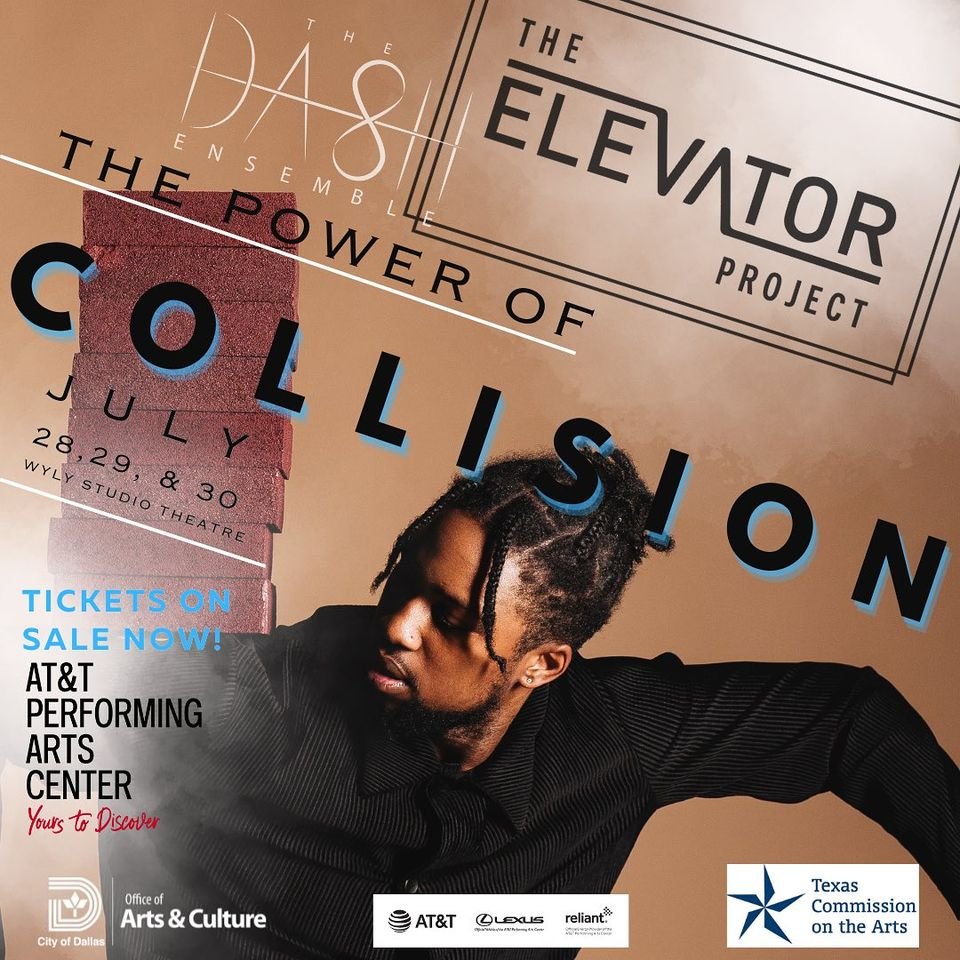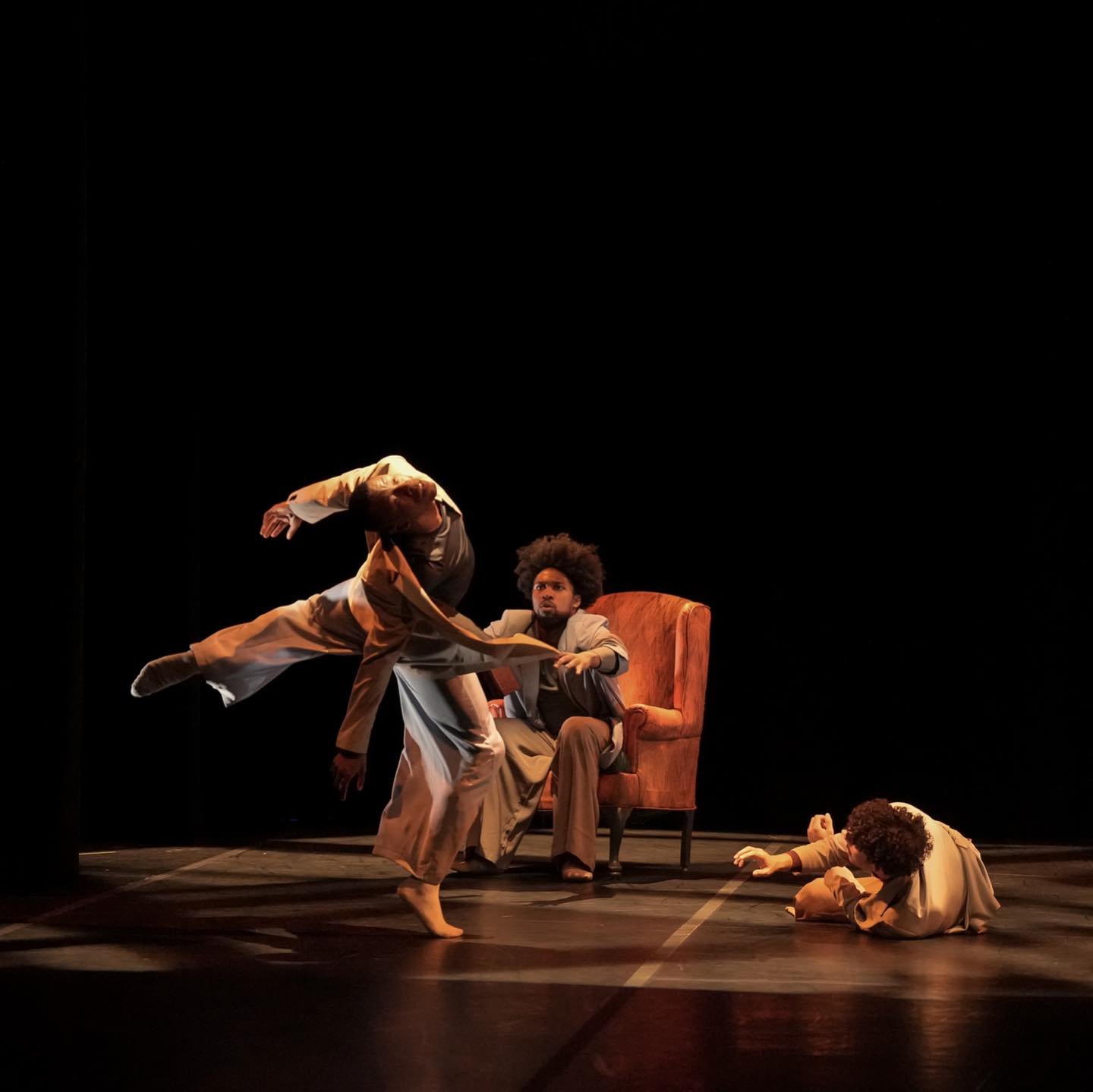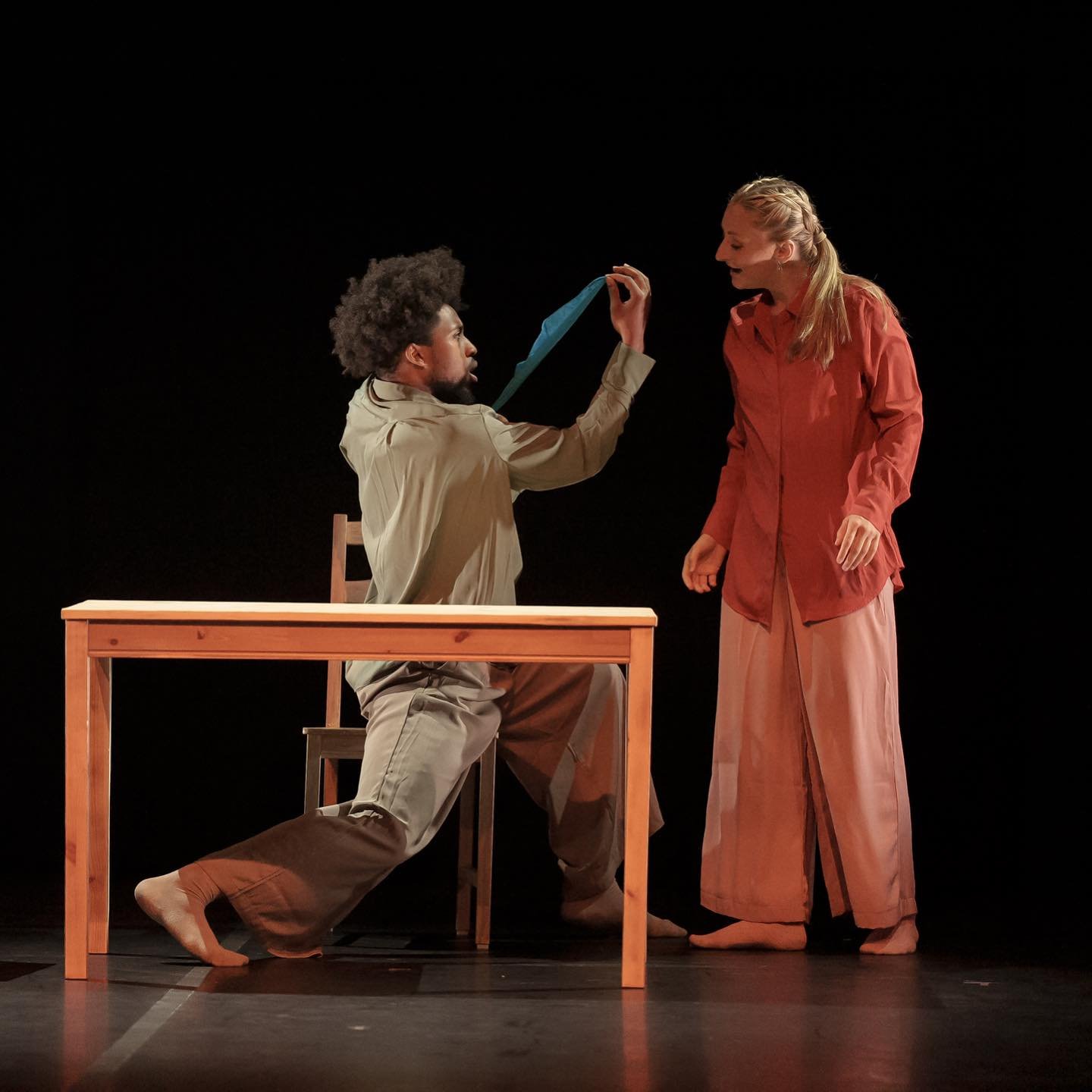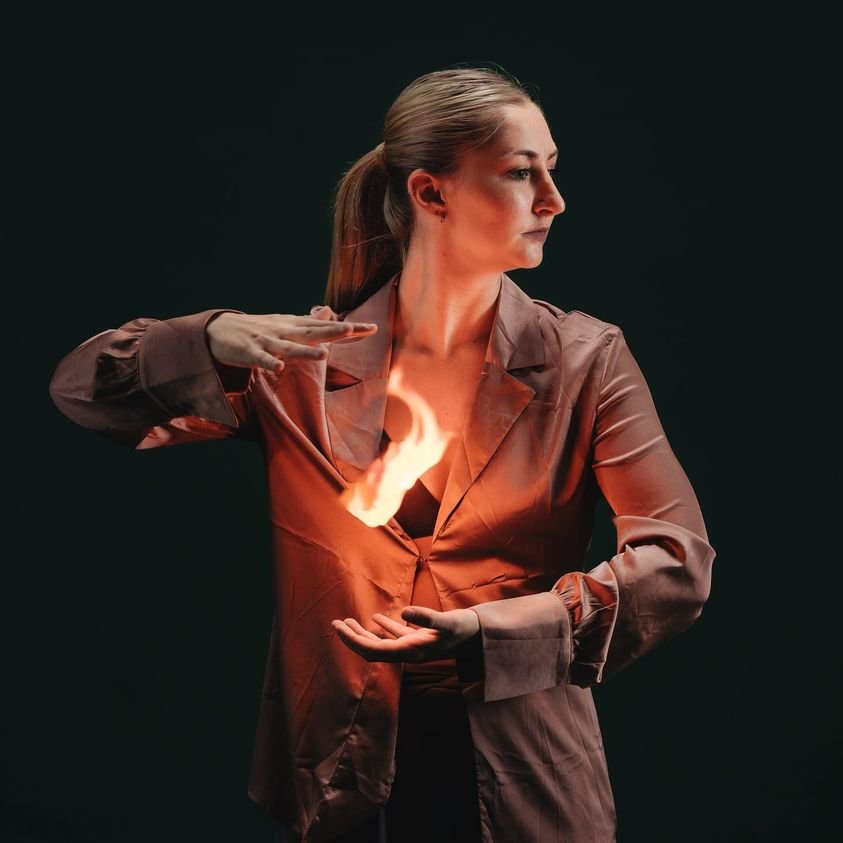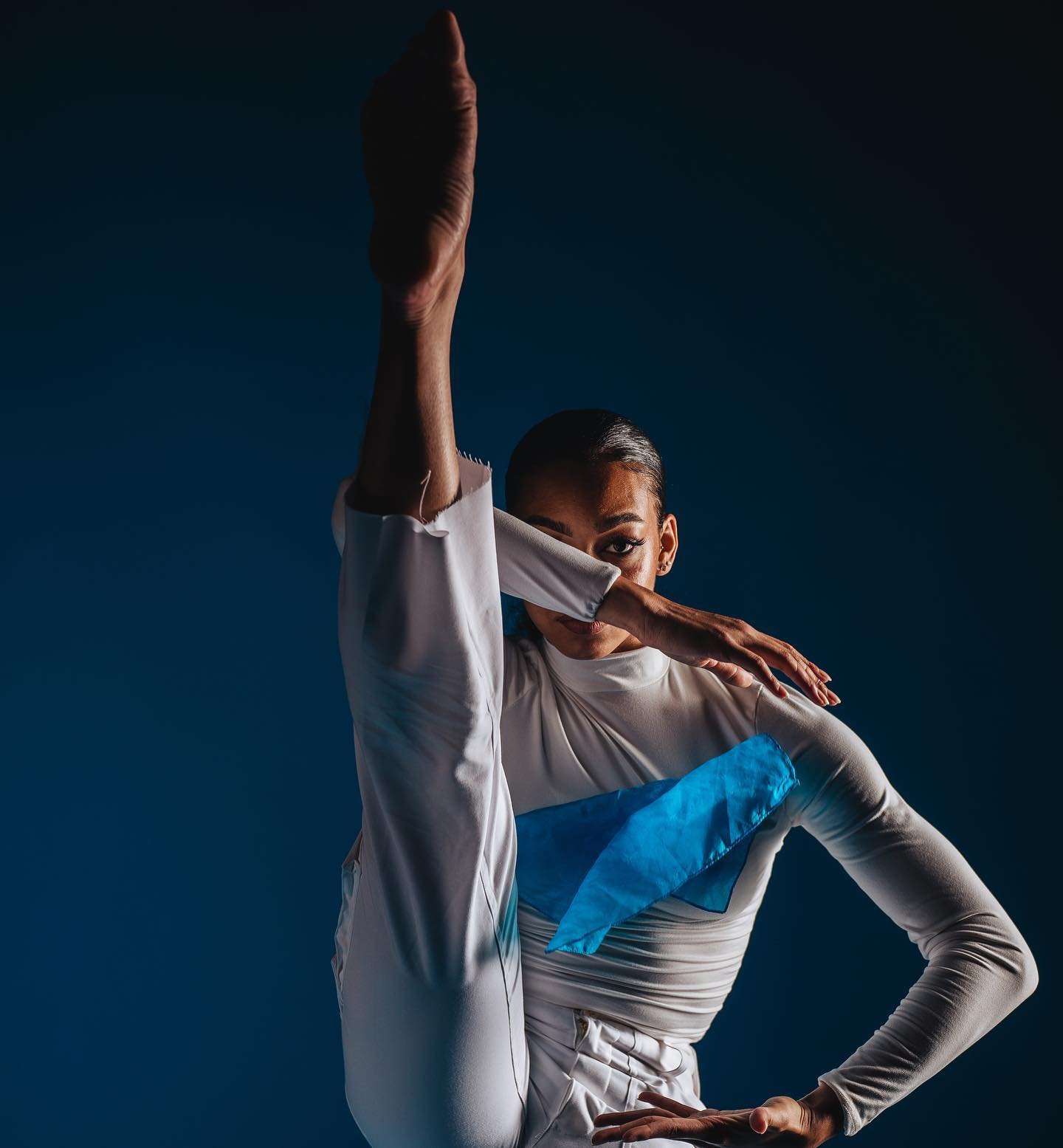The DASH Ensemble @ ATTPAC/The Elevator Project
Photos by Ken Osadon
—Teresa Marrero
The Power of Collision by The DASH Ensemble, with performances July 28-30, was this year’s final presentation of The Elevator Project—an innovative series from ATTPAC (AT&T Performing Arts Center) intended to provide small, emerging and historically marginalized arts organizations and artists with a performance platform in the Dallas Arts District. All the Projects’ participants are selected by a competitive process, thus offering Dallas area spectators a highly curated experience.
Choreographed by founder and artistic director Gregory Dolbashian in collaboration with The DASH Ensemble members and collaborators: Gillian Clifford, Carlos Franquiz, Destin Morisset, Carly Olson, Stephon Williams, Maddie Hanson and Rush Carson (with lighting by Chris Mount, and set by Dolbashian, Maddie Hanson and Zero Productions) the three act, one-hour piece offered a clear yet non-linear story line with a flow that seemed more organic than structured.
In chemistry, there are three important parts to collision theory: 1. That reacting particles must collide; 2. That they must collide with sufficient energy; and 3. They must collide with the proper orientation. Although this notion is not included in the narrative offered to the public, I find it useful as a conceptual framework since the title does herald (directly or/and indirectly) to collision theory—and the energetic impulse of this entire choreography aptly employed these principles throughout.
The three determining factors of collision theory are speed, weight and time between impact and stopping. They all affect the force of the impact. And, while the narrated storyline delivered a comprehensible framework, there seemed to be more layers related to the dynamic manner in which the dancers moved with and against one another, with and against themselves, and with and against the soundtrack.
The first act centered a table and two chairs around which the dancers etched individual existential angst in a series of encounters with a single female dancer who seemed to perform a healing or transformational function. Forming sequential duos, each of the wounded externalized their pain both as a physical and psychological expression. Each encounter centered around a sort of healing that emerged from an internal space within the dancers and manifests in the form of a colored ribbon. These repeated actions, each as individual as the dancers themselves, appears to take a toll on the central figure of the healer, who then must go through her own cleansing/transformation.
The emotional commitment of this Ensemble and their physical dexterity combined to create constantly evolving images. There did not seem to be a single moment of inactivity (though there were pauses), and the dancers’ efforts in executing this highly experimental, contemporary choreography were much appreciated by the audience, who responded with an enthusiastic standing ovation.
But, I am getting ahead of myself.
The second act centered around red bricks, objects meant to symbolize the unyielding heaviness of conflict and disruption. The illusionory, magical aspect of the performance gains ground here with an uncanny transference of individual bricks from one dancer to the other, again showcased individually, in pairs and as the Ensemble. Wearing oversized pants and jackets and only socks on their feet, the dancers evoked wonderment at their effective and fluid transference of these bricks.
Costumes by Gregory Dolbashian, Lindsey Pettus, and Cindy Dupuy made a direct reference to an urban vibe, while allowing the dancers ample space for movement. I enjoyed the lack of fetishism of the dancers´ bodies often associated with revealing or explicitly body-hugging costuming. This choice of costuming signaled a look towards the relationships in movement among the dancers, side-stepping the ego-centrism of focusing on the beauty of any one individual physique. Although, let me assure you, these highly trained dancers are at the peak of their skills. There were moves that looked so easy, yet when broken down to their particular use of muscular strength and dexterity left me wanting to interrupt by clapping, though I didn’t. (Isn’t it time we broke this unspoken rule?)
Throughout, the physical movements that characterized the dancing ranged from Horton-like modern dance to hip hop micro references. I even thought I saw a very quick yet direct quote from Alvin Ailey’s Revelations which (if this was the case) was well-placed and lovely.
The dancers´ movements synchronized perfectly, yet not predictably through soundscapes created by composer Rush Carson, also featuring selections from Balmorhea, Apparat, Kelly Moran, and Gabriel Ólafs, with voiceover by Chanel Dasilva. My only observation is that the three acts flowed musically in a somewhat monochromatic way, making the transitions less evident. But the narration between the acts took care of that, framing each with a particular storyline.
The final act was structured as an ascent into new possibilities and ways of existence, symbolized by the ingenious use of fiery sparks that emerged in flashes from the hands of the individual dancers. The “power of collision” emerged as a recurringtheme that evoked courage, possibilities, and transformations. In a circular move, the table and two chairs were reinserted on stage towards the end of the third act—and the dancers turned the table top towards the audience. The glowing words were the title of the performance: The Power of Collision.
Before closing, I want to touch on the problem that tarnished this otherwise wonderful experience: the ill-conceived seating arrangement in the Wyly Theatre’s studio space, where the performance took place. Seated rows on the flat floor, with several rows on a slightly elevated platform, left 90% of the viewers with seriously obstructed views. I had to stand on the sidelines in order to see, particularly the movements on the floor. Many a frustrated audience member struggled to catch glimpse of the action. Please organizers, if you are going to invest in a performance, make sure your audience will be able to see it. Raked (bleacher-style) seating would have been a better choice.
Congratulations to The DASH Ensemble for a piece flawlessly performed with full commitment and courage. And for information on next season’s The Elevator Project, go to: attpac.org/about/elevator
Teresa Marrero reviews Dance and Theater. She is Professor of Latin American and Latinx theater in the Spanish Department at the University of North Texas.
